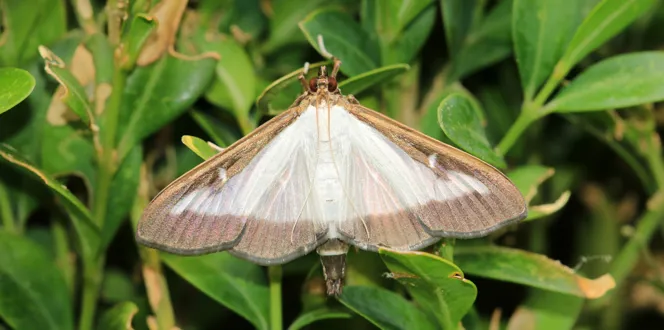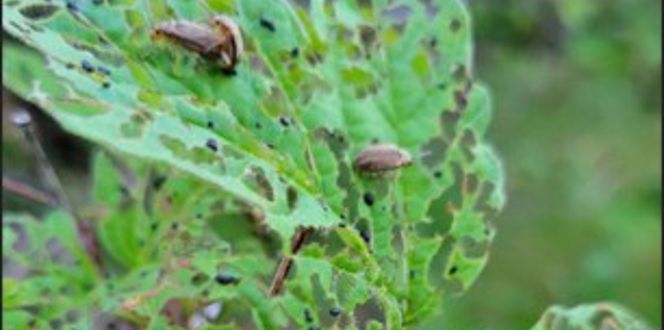What were you doing 17 years ago?
Maybe you were watching the final episode of Friends on TV or saw The Polar Express when it came out in theaters. Or maybe you voted for the reelection of George W. Bush to his second term as president or watched Hurricane Ivan become the third costliest hurricane in America at that time.
While you were going about your normal everyday life in 2004, the 17-year cicadas were dropping their eggs in the ground around tree trunks or along hedgerows.
And they’re about to emerge.
In fact, known as “Brood X,” this colony of 17-year cicadas is considered the largest ever recorded … and experts have been tracking this species since 1715.
Want to learn how to protect your trees from cicadas? Read on. We’ve got some tips to help your landscape survive another 17 years.
Can You Prevent Cicadas?
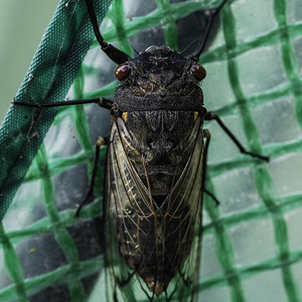
The Brood X 17-year cicadas are expected to emerge between April and June. More precisely, this happens once the soil approximately 8 inches below the surface reaches 64 degrees Fahrenheit.
The largest outbreaks are expected in the following states: Delaware, Georgia, Illinois, Indiana, Kentucky, Maryland, Michigan, North Carolina, New Jersey, New York, Ohio, Pennsylvania, Tennessee, Virginia, West Virginia, and Washington, D.C.
While cicadas aren’t harmful to humans in that they don’t bite or sting, they can cause significant damage to your trees and shrubs when the egg-laying females burrow into branches. This is why taking the appropriate measures for cicada control damage prevention are particularly important in 2021.
Tree care professionals are using cicada netting and wrapping it around the whole diameter of particularly susceptible trees to protect them from damage from such a large colony of pests.
How do You Stop Cicadas From Making Noise?
Cicadas are well known for the sound they make -- a rather repetitive clicking. In fact, cicadas are one of the loudest insects in the world.
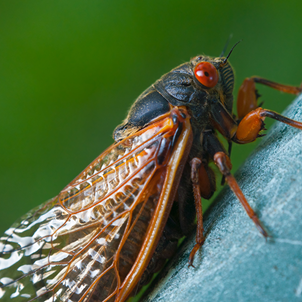
They are able to make this noise because they have an organ that is unique among insects -- the tymbal organ.
This chirping noise isn’t just annoying; it serves an important purpose for the insects as a mating call. And the volume needs to be high because they need females to hear them from a great distance … and that’s why this sound can travel about 1 mile.
Male cicadas generally only make these mating calls during daylight hours and then quiet down by nightfall.
Unfortunately, cicadas only ease up on the noise when it’s below 72 degrees Fahrenheit because their diaphragms lose elasticity. Although the use of cicada control netting on tender trees can help keep larger numbers of cicadas out of your yard.
The good news: the cicadas mating season only lasts a couple of weeks.
What Trees do Cicadas Eat?
You might think insects this big and noisy need to eat quite a lot.
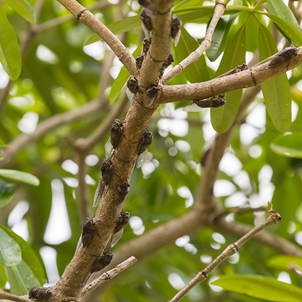
They sure do, but they don’t eat tree leaves or branches like you’d expect. Instead, they create slits in branches to lay their eggs. And these cuts in trees weaken them over time, causing them to break, wither, or die.
Then, once the cicada eggs hatch, the insects drop to the ground to feed on tree roots, as well as grassroots, for two to five years.
Cicadas prefer deciduous trees like elm, chestnut, ash, maple, hawthorn, redbud, and oak. Fruit trees are also at risk. They pose the largest threat to small, weak, ornamental trees.
If you recently planted new trees of these types, using cicada control netting may help protect them. If you think cicadas have already damaged your trees, here are a few things you can do.


